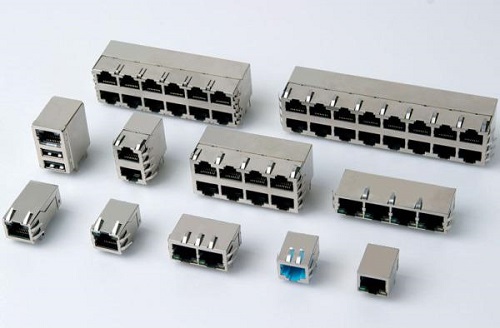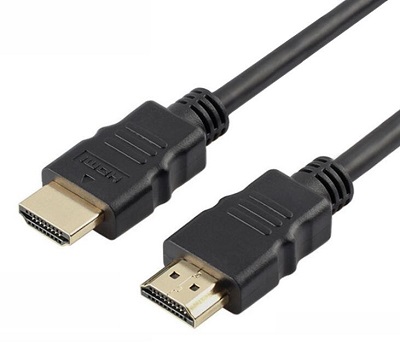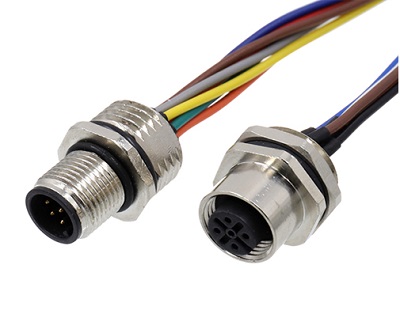IO connector(input/output connector)is an electrical interface used to establish a physical connection between a device or system and external devices or peripherals. It enables the transfer of data, signals, or power between different devices. These connectors are widely utilized in various products that necessitate data transfer or internet connectivity, including computers, routers, servers, and switches, as well as in applications where audio/video signal data input/output is required.
IO Connector types
Ethernet Connector
Ethernet connectors, such as RJ-45, are used to establish network connections between devices. RJ45 connectors can be used in various different applications that require an ethernet connection to a local area network (LAN). It is commonly used for wired internet connections, connecting devices like computer, routers, switches, and modems. The RJ45 connector is easy to terminate, compatible with Cat5e/Cat6/Cat7 Ethernet cables with high-speed data transmission at speeds of up to 1 Gbps.

USB
USB (Universal Serial Bus), is one of the most popular I/O connectors used in keyboards, mice, printers, external storage devices, and more electronics, This connector enables the seamless transmission of both data and power through a single cable, making it exceptionally convenient, USB connectors support various data transfer speeds depending on the USB version and the device’s capabilities. USB 2.0 transfer rates of up to 480 Mbps, USB 3.0 up to 5 Gbps, USB 3.1 Gen 2 speed up to 10 Gbps, and USB 3.2 can reach 20 Gbps or higher. USB ports can provide power to charge smartphones, tablets, and other USB-powered devices, eliminating the need for separate power adapters, and USB offer backward compatibility,

HDMI connector
HDMI (High-Definition Multimedia Interface), support the transmission of high-definition audio and video signals, allowing for the seamless playback of content in resolutions such as 1080p (Full HD), 4K Ultra HD, and even 8K Ultra HD. This enables users to experience exceptional picture and sound quality, just use a single cable, ensuring a lossless and reliable transmission of audio and video data., They are commonly used for connecting displays, televisions, and projectors to computers, gaming consoles, and media players.

D-Sub connector
D-sub(D-subminiature) connector is a type of I/O connector commonly used for various applications, available in different applications like computer interfaces (such as VGA and serial ports), industrial equipment, instrumentation, telecommunications, and video game consoles, They can carry signals such as video, audio, serial data, parallel data, and control signals. D-sub pin configurations, such as 9, 15, 25, 37, and 50 pins. The number of pins determines the specific application and functionality of the connector, additionally, connectors have metal shielding surrounding the pins, providing electromagnetic interference (EMI) protection and enhancing signal integrity.

M series connector
M series circular waterproof connectors such as the M12 and M8 connectors are commonly used as I/O (Input/Output) connectors, which is designed to provide reliable connections in harsh and demanding environments, and often used in industrial automation, machinery, robotics, and sensor applications, where it facilitates the transmission of signals, power, and data between devices. They are constructed with rugged materials, such as high-quality plastics or metal, that offer resistance to impacts, vibration, corrosion, and other mechanical stresses. This robust construction ensures the connectors can endure demanding conditions and maintain their functionality over time.

Terminal Blocks
Terminal blocks are connectors provide easy connection and disconnection of wires in industrial and electrical applications. They are available in Screw Clamp and Spring Clamp, designed to accommodate a range of wire sizes, from small gauge wires to larger ones.They are commonly used in control panels, power distribution, and wiring systems.

Here are some common applications of I/O connectors:
1. Computers and Peripherals: I/O connectors are extensively used in computers and peripherals to enable connectivity with external devices. This includes connectors such as USB, HDMI, DisplayPort, VGA, DVI, Ethernet, audio jacks, and various expansion card connectors like PCIe.
2. Networking and Telecommunications: I/O connectors play a crucial role in networking and telecommunications equipment. Connectors like RJ45 and fiber optic connectors facilitate data transmission in networking devices such as routers, switches, modems, and network interface cards.
3. Industrial Automation and Machinery: I/O connectors are widely used in industrial automation and machinery applications. They enable connections between sensors, actuators, control systems, and other equipment. Connectors like M12, M8, D-sub, and terminal blocks are commonly employed in industrial environments.
4. Audio/Video Equipment: I/O connectors are essential in audio and video equipment, including televisions, home theater systems, audio receivers, speakers, and professional audio/video equipment. Connectors like HDMI, RCA, XLR, BNC, and optical connectors (TOSLINK) enable audio and video signal transmission.
5. Automotive and Transportation: I/O connectors are used extensively in the automotive and transportation industry. They enable connections for various systems such as in-car entertainment, navigation systems, engine control units, sensors, lights, and power distribution. Connectors like automotive-grade USB, Molex, and specific automotive connectors are utilized.
6. Consumer Electronics: I/O connectors are prevalent in consumer electronics products such as smartphones, tablets, digital cameras, gaming consoles, and audio devices. Connectors like USB, audio jacks, and memory card slots facilitate data transfer, charging, and audio/video connections.
7. Energy and Power Distribution: I/O connectors are used in energy and power distribution applications, including power generation, distribution panels, renewable energy systems, and industrial power equipment. They facilitate connections for power input, output, and control signals.
8. Internet of Things (IoT) Devices: I/O connectors are employed in IoT devices, enabling connectivity between sensors, actuators, and control systems. They facilitate data transmission and power supply in various IoT applications.
Choose from a variety of I/O connectors to meet your specific needs, whether it’s fast data transfer, waterproof or rugged design, or compatibility with industry standards. Unlock the power of connectivity with I/O connectors and experience seamless communication and enhanced functionality in your electronic systems. For more information, please contact: info@flexcontac.com, www.flexcontac.com .





